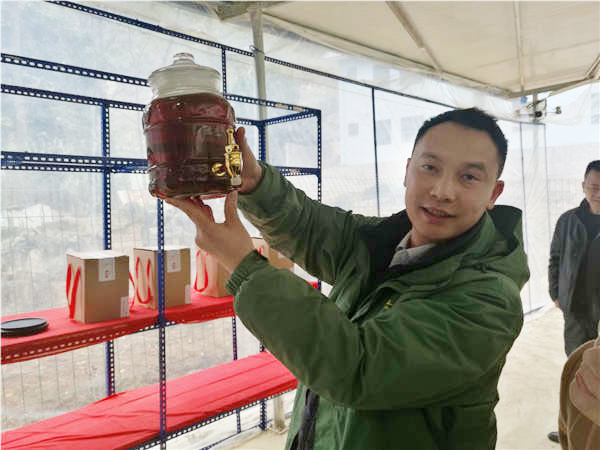 |
|
Qiu Xiaojun, an official, holds up a jar of "scorpion drink". |
Post-2020
In the next three years, the central government is likely to focus on poverty reduction in the places most needed, namely the provinces of Guizhou, Sichuan, Yunnan and Gansu.
Economic disparities among regions had peaked in 2004 but have declined since due to the movement of people from villages to cities for work and the adoption of measures such as the Western Area Development program, Hu, the economist from Tsinghua University, tells the newspaper in an interview in Beijing.
The dean of the Institute for Contemporary China Studies at the elite university, describes himself as a "scholar of the era following Deng Xiaoping" in a book on China's rise.
"By 2020, China will abandon the concept of absolute poverty and we will use low-income or minimum insurance to define this," he says. "It also implies that when China enters the high-income stage, the new standard will give us a better idea of how we can invest in human capital and help poor people improve their development ability."
Today, there are between 60 and 70 million people with minimum insurance in China, accounting for about five percent of the total population, he adds.
The minimum rural and urban insurance sums vary from province to province but are required by law to cover basics such as medical or pension allowance. For Guangxi, which is on the lower side of this spectrum, the figures are 300 yuan a person a month in the cities and 140 yuan in the villages. In 2015, Shanghai's minimum insurance was 790 yuan.
Zhang Li and Liu Yixi contributed to this story.
satarupa@chinadaily.com.cn
|
|
|
|
|
|
|
|
